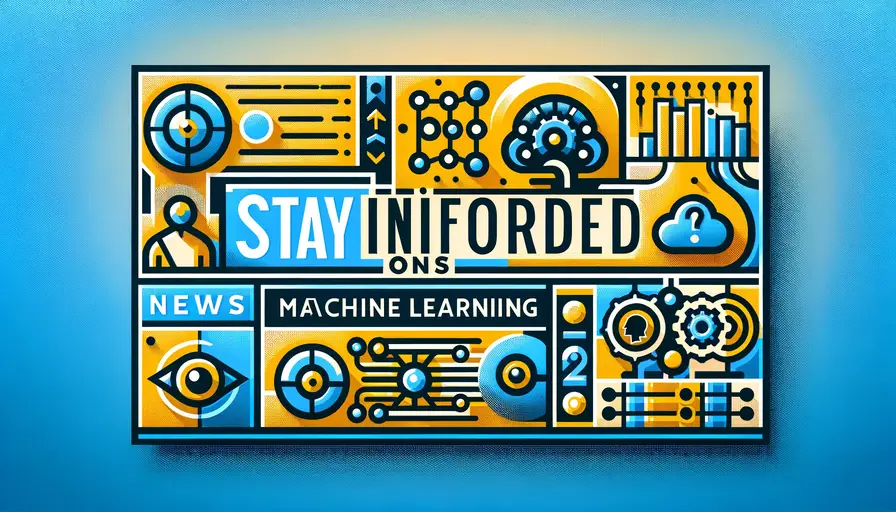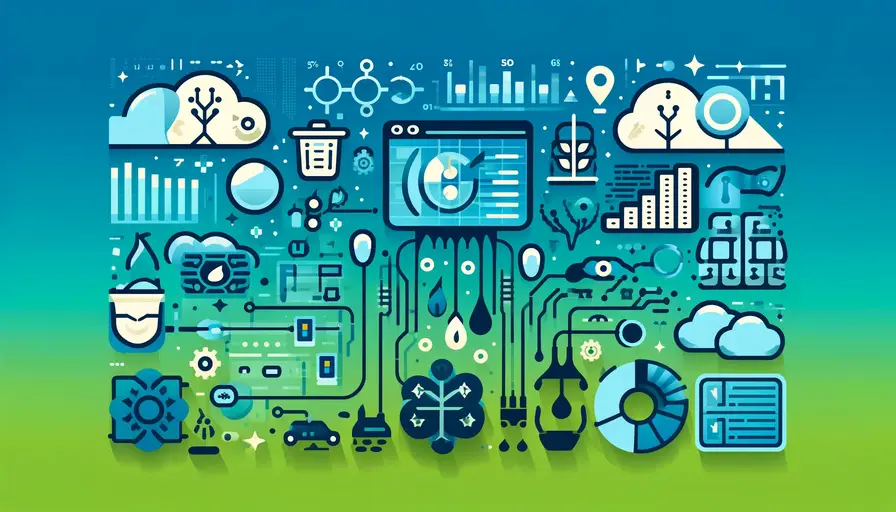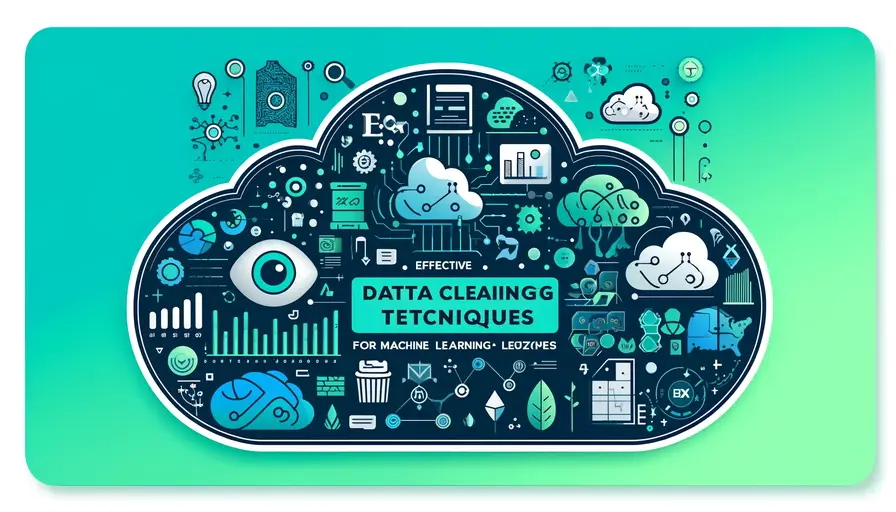
Stay Informed on Latest Machine Learning Dataset News

Staying informed about the latest developments in machine learning datasets is crucial for data scientists, researchers, and practitioners. Access to new and diverse datasets can significantly enhance the quality of machine learning models and provide fresh insights into various fields. This article explores the best resources and strategies for keeping up-to-date with the latest machine learning dataset news, offering practical examples and emphasizing the importance of staying informed.
Importance of Machine Learning Datasets
Role of Datasets in Machine Learning
Datasets are the foundation of machine learning models. They provide the data necessary for training algorithms to recognize patterns, make predictions, and improve over time. A high-quality dataset can make a significant difference in the performance and accuracy of a machine learning model. Therefore, having access to the latest datasets ensures that your models are built on relevant and diverse data.
Machine learning datasets come in various forms, including structured data, unstructured data, and time-series data. Structured datasets are typically in tabular format, with rows representing individual records and columns representing features. Unstructured datasets include text, images, audio, and video, which require specialized techniques for processing and analysis.
Staying updated with the latest datasets also helps in exploring new research areas and applications. For instance, emerging datasets in fields like healthcare, finance, and environmental science open up opportunities for innovative solutions and advancements in machine learning.
 Why Python is the Preferred Language for Machine Learning
Why Python is the Preferred Language for Machine LearningChallenges with Datasets
While datasets are essential, they also present several challenges. One of the primary issues is the quality and cleanliness of the data. Datasets often contain missing values, inconsistencies, and errors that need to be addressed before training a model. Data preprocessing and cleaning are crucial steps that require significant effort and expertise.
Another challenge is the availability of labeled data. Many machine learning models, particularly those for supervised learning, require labeled datasets for training. However, obtaining labeled data can be time-consuming and expensive, especially for large datasets. This is where techniques like semi-supervised learning and active learning come into play.
Moreover, privacy and ethical considerations are critical when dealing with datasets, especially those containing personal or sensitive information. Ensuring that data is collected, stored, and used in compliance with ethical standards and regulations is paramount.
Benefits of Accessing Latest Datasets
Accessing the latest datasets offers several benefits. Firstly, it allows you to work with up-to-date information, ensuring that your models remain relevant and accurate. New datasets often reflect the latest trends and patterns, which can enhance the predictive power of your models.
 Strategies for Handling Outliers in Machine Learnin Regression
Strategies for Handling Outliers in Machine Learnin RegressionSecondly, new datasets provide an opportunity to explore different domains and applications. For instance, a recently released medical dataset might enable you to develop models for diagnosing diseases or predicting patient outcomes. Similarly, a new financial dataset can help in building models for stock price prediction or credit risk assessment.
Lastly, working with the latest datasets can improve your skills and knowledge. By exploring different types of data and applying various machine learning techniques, you can gain a deeper understanding of the field and stay ahead of the curve.
Top Resources for Machine Learning Datasets
Kaggle
Kaggle is one of the most popular platforms for machine learning datasets. It offers a vast collection of datasets across various domains, including healthcare, finance, sports, and more. Kaggle also hosts competitions where data scientists can collaborate, compete, and share their solutions.
Kaggle datasets are often accompanied by detailed descriptions, data dictionaries, and example notebooks, making it easy to understand and work with the data. The platform also allows users to upload their datasets, fostering a collaborative environment where data scientists can share and discover new data.
 Is Machine Learning Difficult to Learn?
Is Machine Learning Difficult to Learn?Example of loading a Kaggle dataset using pandas:
import pandas as pd
# Load the dataset
url = 'https://path_to_kaggle_dataset.csv'
dataset = pd.read_csv(url)
# Display the first few rows of the dataset
print(dataset.head())UCI Machine Learning Repository
The UCI Machine Learning Repository is another valuable resource for machine learning datasets. It contains a diverse collection of datasets, including those for classification, regression, clustering, and more. The repository is widely used in academic research and offers datasets that are well-documented and curated.
UCI datasets come with detailed descriptions, including attribute information, missing values, and relevant research papers. This makes it easier to understand the context and characteristics of the data, enabling more effective model development.
Example of loading a UCI dataset using pandas:
 Is Coding Necessary for Machine Learning?
Is Coding Necessary for Machine Learning?import pandas as pd
# Load the dataset
url = 'https://archive.ics.uci.edu/ml/machine-learning-databases/iris/iris.data'
column_names = ['sepal_length', 'sepal_width', 'petal_length', 'petal_width', 'class']
dataset = pd.read_csv(url, header=None, names=column_names)
# Display the first few rows of the dataset
print(dataset.head())Data.gov
Data.gov is a comprehensive resource for government datasets. It provides access to a wide range of data from various federal agencies, covering topics such as agriculture, education, energy, health, and more. Data.gov aims to promote transparency and innovation by making government data accessible to the public.
The datasets on Data.gov are often large and complex, making them suitable for advanced machine learning projects. Researchers and data scientists can use these datasets to address real-world problems and develop solutions with significant societal impact.
Example of loading a Data.gov dataset using pandas:
import pandas as pd
# Load the dataset
url = 'https://path_to_data_gov_dataset.csv'
dataset = pd.read_csv(url)
# Display the first few rows of the dataset
print(dataset.head())Strategies for Staying Updated
Subscribing to newsletters and blogs focused on machine learning and data science is an effective way to stay updated with the latest datasets and developments. Many industry experts and organizations publish regular content on new datasets, research findings, and best practices.
 Can You Learn Machine Learning Without a Computer Science Background?
Can You Learn Machine Learning Without a Computer Science Background?Newsletters like "Data Elixir" and "KDnuggets News" curate the latest news, articles, and resources in the data science field. Blogs from platforms like Towards Data Science and Analytics Vidhya offer in-depth articles, tutorials, and case studies on various machine learning topics.
Example of subscribing to a newsletter:
# Subscribe to Data Elixir newsletter
url = 'https://dataelixir.com'
# Visit the website and enter your email to subscribeJoin Online Communities
Online communities and forums are excellent resources for staying informed about the latest datasets and trends in machine learning. Platforms like Reddit, Stack Overflow, and specialized groups on LinkedIn provide a space for data scientists to share knowledge, ask questions, and discuss recent developments.
Participating in these communities allows you to learn from others, share your insights, and discover new datasets and tools. Engaging with the community also helps in building a professional network and staying connected with industry trends.
 Is Khan Academy a Reliable Resource for Machine Learning Education?
Is Khan Academy a Reliable Resource for Machine Learning Education?Example of joining a Reddit community:
# Join the Machine Learning subreddit
url = 'https://www.reddit.com/r/MachineLearning'
# Create a Reddit account and join the communityFollow Research Conferences and Journals
Keeping track of research conferences and journals in the machine learning field is another effective strategy for staying updated. Conferences like NeurIPS, ICML, and CVPR showcase the latest research, including new datasets, methodologies, and applications.
Research journals such as the Journal of Machine Learning Research (JMLR) and IEEE Transactions on Pattern Analysis and Machine Intelligence (TPAMI) publish peer-reviewed articles on cutting-edge machine learning topics. These publications often introduce new datasets and provide insights into their potential applications.
Example of accessing conference proceedings:
# Access NeurIPS conference proceedings
url = 'https://papers.nips.cc'
# Browse the latest papers and explore new datasetsEvaluating and Using New Datasets
Assessing Dataset Quality
When discovering new datasets, it's essential to evaluate their quality to ensure they are suitable for your machine learning projects. Key factors to consider include data completeness, consistency, accuracy, and relevance. High-quality datasets should have minimal missing values, consistent data formats, and accurate labels or annotations.
Additionally, consider the size and diversity of the dataset. A larger dataset with diverse examples is more likely to generalize well and improve the performance of your model. However, it's also important to ensure that the dataset is representative of the problem domain and relevant to your specific use case.
Example of assessing dataset quality using pandas:
import pandas as pd
# Load the dataset
url = 'https://path_to_dataset.csv'
dataset = pd.read_csv(url)
# Check for missing values
missing_values = dataset.isnull().sum()
print('Missing Values:\n', missing_values)
# Check for data consistency
consistency_check = dataset.dtypes
print('Data Types:\n', consistency_check)
# Check for data accuracy (requires domain knowledge)
# For example, checking for outliers in numerical columns
accuracy_check = dataset.describe()
print('Data Summary:\n', accuracy_check)Preprocessing and Cleaning Data
Data preprocessing and cleaning are critical steps before using any new dataset for machine learning. This process involves handling missing values, removing duplicates, correcting inconsistencies, and transforming data into a suitable format for analysis.
Techniques like data imputation, normalization, and encoding categorical variables are commonly used to prepare data for model training. Preprocessing ensures that the dataset is clean, consistent, and ready for analysis, improving the model's performance and reliability.
Example of preprocessing a dataset using pandas:
import pandas as pd
from sklearn.preprocessing import StandardScaler, LabelEncoder
# Load the dataset
url = 'https://path_to_dataset.csv'
dataset = pd.read_csv(url)
# Handle missing values
dataset.fillna(dataset.mean(), inplace=True)
# Encode categorical variables
label_encoder = LabelEncoder()
dataset['category'] = label_encoder.fit_transform(dataset['category'])
# Normalize numerical features
scaler = StandardScaler()
dataset[['feature1', 'feature2']] = scaler.fit_transform(dataset[['feature1', 'feature2']])
# Display the preprocessed dataset
print(dataset.head())Applying Datasets to Machine Learning Models
Once the dataset is preprocessed and cleaned, it can be applied to machine learning models. Depending on the problem domain, different algorithms and techniques can be used to train and evaluate models. For instance, classification algorithms like Random Forest, SVM, and Logistic Regression are commonly used for categorical outcomes, while regression algorithms like Linear Regression and Gradient Boosting are used for continuous outcomes.
It's important to split the dataset into training and testing sets to evaluate the model's performance. Cross-validation techniques can also be used to assess the model's generalizability and avoid overfitting.
Example of applying a dataset to a classification model using scikit-learn:
import pandas as pd
from sklearn.model_selection import train_test_split
from sklearn.ensemble import RandomForestClassifier
from sklearn.metrics import accuracy_score
# Load and preprocess the dataset
url = 'https://path_to_dataset.csv'
dataset = pd.read_csv(url)
dataset.fillna(dataset.mean(), inplace=True)
label_encoder = LabelEncoder()
dataset['category'] = label_encoder.fit_transform(dataset['category'])
# Split the dataset into features and target
X = dataset.drop('target', axis=1)
y = dataset['target']
# Split the data into training and testing sets
X_train, X_test, y_train, y_test = train_test_split(X, y, test_size=0.3, random_state=42)
# Train the model
model = RandomForestClassifier()
model.fit(X_train, y_train)
# Make predictions and evaluate the model
y_pred = model.predict(X_test)
accuracy = accuracy_score(y_test, y_pred)
print(f'Accuracy: {accuracy}')Leveraging Machine Learning Datasets for Research and Development
Exploring New Research Areas
Access to the latest datasets enables researchers to explore new areas and applications of machine learning. For instance, emerging datasets in genomics can lead to breakthroughs in personalized medicine, while datasets in climate science can enhance our understanding of environmental changes.
By staying informed about new datasets, researchers can identify novel opportunities for applying machine learning techniques to address complex problems. This exploration can lead to innovative solutions and contribute to the advancement of the field.
Example of exploring a new research area:
# Load a genomics dataset (example)
url = 'https://path_to_genomics_dataset.csv'
genomics_data = pd.read_csv(url)
# Analyze the dataset and identify potential research questions
print(genomics_data.head())Enhancing Model Performance
Working with diverse and up-to-date datasets can significantly enhance the performance of machine learning models. New datasets often introduce unique patterns and examples that improve the model's ability to generalize and make accurate predictions.
Ensembling techniques, where multiple models are trained on different datasets and their predictions are combined, can also be used to boost performance. Access to a variety of datasets allows for more robust and effective model training.
Example of using an ensemble method with multiple datasets:
import pandas as pd
from sklearn.ensemble import RandomForestClassifier, VotingClassifier
from sklearn.model_selection import train_test_split
from sklearn.metrics import accuracy_score
# Load and preprocess multiple datasets
url1 = 'https://path_to_dataset1.csv'
url2 = 'https://path_to_dataset2.csv'
dataset1 = pd.read_csv(url1)
dataset2 = pd.read_csv(url2)
# Preprocess both datasets (example)
dataset1.fillna(dataset1.mean(), inplace=True)
dataset2.fillna(dataset2.mean(), inplace=True)
label_encoder = LabelEncoder()
dataset1['category'] = label_encoder.fit_transform(dataset1['category'])
dataset2['category'] = label_encoder.fit_transform(dataset2['category'])
# Combine the datasets (example)
combined_dataset = pd.concat([dataset1, dataset2], ignore_index=True)
# Split the dataset into features and target
X = combined_dataset.drop('target', axis=1)
y = combined_dataset['target']
# Split the data into training and testing sets
X_train, X_test, y_train, y_test = train_test_split(X, y, test_size=0.3, random_state=42)
# Train ensemble models
model1 = RandomForestClassifier()
model2 = RandomForestClassifier()
ensemble_model = VotingClassifier(estimators=[('rf1', model1), ('rf2', model2)], voting='soft')
ensemble_model.fit(X_train, y_train)
# Make predictions and evaluate the ensemble model
y_pred = ensemble_model.predict(X_test)
accuracy = accuracy_score(y_test, y_pred)
print(f'Ensemble Model Accuracy: {accuracy}')Contributing to the Community
Sharing your datasets and findings with the community can have a significant impact. By contributing to platforms like Kaggle and UCI Machine Learning Repository, you can help other researchers and practitioners access valuable data and insights.
Publishing your datasets and research findings in journals and conferences also promotes collaboration and knowledge sharing. This contribution fosters a collaborative environment where the entire community benefits from collective advancements.
Example of sharing a dataset on Kaggle:
# Prepare your dataset and metadata
dataset_path = 'path_to_your_dataset.csv'
dataset_metadata = {
'title': 'Your Dataset Title',
'description': 'Description of your dataset',
'tags': ['machine learning', 'data science', 'example']
}
# Use Kaggle API to upload the dataset
# (Refer to Kaggle's official documentation for detailed instructions)Staying informed about the latest machine learning datasets is essential for continuous learning, innovation, and advancement in the field. By leveraging various resources, engaging with the community, and applying new datasets to your projects, you can enhance your skills, improve model performance, and contribute to the collective knowledge in machine learning. Embrace the opportunities presented by new datasets and explore the endless possibilities they offer.
If you want to read more articles similar to Stay Informed on Latest Machine Learning Dataset News, you can visit the Education category.






You Must Read